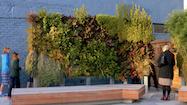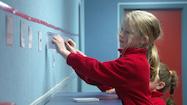Anne Bunton explains how the technology learning area gave purpose to a class project.
Technology as a part of a cross-curriculum inquiry
Transcript
This year our school has taken change as our inquiry topic. Through the start of term two, with the centenary celebrations for a hundred years, we decided to go down the line of looking at Anzac and making some Anzac biscuits with the children.
This led – when we started in our planning – led us into looking at other areas of the curriculum that making the Anzac biscuits came into, and technology featured quite heavily within our discussions. The areas from the technology curriculum that we were going to cover were, Planning for practice, Brief development, and Characteristics of technology.
From looking through those in the indicators, the three that we decided to be accountable for, and make sure that these were the areas the children walked away with sound knowledge, were going to be:
- under Planning for practice: identifying key stages required to produce an outcome
- under Brief development: describe the attributes for an outcome that take into account the need or opportunity being addressed and the resources available
- under Characteristics of technology: describe the relationship between technology, and the made, natural, and social world.
As for a lot of children, when you look around the classroom, you just take it for granted that you have what you have, and it is not looked at as why is it there and what is its purpose. Most of the things around us are built and made for a purpose, and that was one of the key learning areas that needed to come through for the children so that they could understand the original purpose of the Anzac biscuit, which was sent out a hundred years ago.
This led us to having a real purpose for the Anzac biscuit that we were going to make. The attributes of the Anzac biscuits, from their own personal experience eating them, was that they obviously needed to be soft in the middle with a little crunch on the outside, they needed to be round, as that's how they see them, they needed to have a really good appearance of having the golden look, and the taste was extremely important too. These were the key elements that we used each time we set out to do a baking batch and when doing our taste testing of our Anzac biscuits.
As we were going to sell the biscuits, we needed to look at the attributes of the packaging. We decided that cellophane packaging would be the way to go, with a clear label on the front saying exactly what the biscuits were, and as the child had placed them in order, we had the child’s name on it. We also actually put the room that made the biscuits as we felt it was important in case anyone wanted to give us some feedback.
We integrated the Anzac biscuits throughout our curriculum over the three weeks. So all our reading was around Anzac and our writing too, and our maths. Obviously orders had been placed out into our school community and as they came back in we needed to gather together information around how many different biscuits had been ordered with all the different flavours. So as a class they put together an agreed tally chart. We also did quite a lot of learning around weight and measurement through the actual baking of the biscuits and the making, which the students really, really, enjoyed, and I'd say has been a highlight of the year.
I found using technology within the planning has really added a lot of depth to the children’s understanding. If I look back and I hadn’t taught the technology part, especially around the natural, made, and social world, I really feel it would have been a making project for the students. The students have come away now and can talk about (still) the made and the natural world and the social side of it when they are looking at sustainability. They are now making connections about the impact that we have as a society and how technology has created some of our environmental issues now that we have.
I also look back and think about the attributes that we looked at as well under the Brief development. Again if I hadn’t gone via the technology website and looked at that more in depth, I probably wouldn’t have focused on those things and again they would have walked away. And that word has came up since – when we were looking at shape and mass, and they've made the connection, ”Oh this is what it looks like, what we can see”. So there are deeper connections happening, not just through technology but popping up in other areas of the curriculum as well and the way they talk about things.
Related videos
Year 1–2 technologists design for a purpose (03:52)
Students in years 1 and 2 discuss with their teacher why technologists make things out of different materials.
Using work in our community to learn about technology (03:36)
Christine Elder sees opportunities in her local community to share technology learning with her year eight students.
Technology, mathematics, and science in years 3–4: Flight inquiry (03.38)
Andrea Robertson and Lisa Hocking share how mathematics and science were incorporated into their technology learning.



